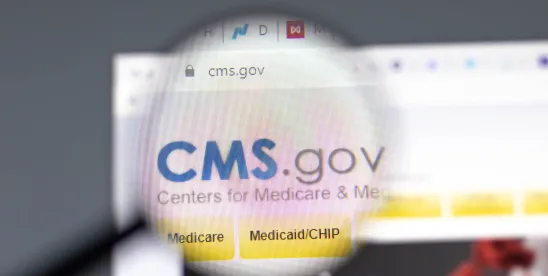Obtaining Medicare coverage and reimbursement for medical devices is notoriously more difficult than for drugs or biologics, and any progress on expanding coverage pathways has been agonizingly slow for industry stakeholders. An announcement on August 7, 2024 by the Centers for Medicare and Medicaid Services (CMS) of a final notice for the Transitional Coverage for Emerging Technologies (TCET) pathway was therefore a welcome development. However, digging under the surface of the TCET pathway uncovers some less than thrilling details. CMS’s failure to address stakeholder proposals to modify the TCET program has increased interest and advocacy around Congress’s consideration of the Ensuring Patient Access to Critical Breakthrough Products Act. We explore both the shortcomings of the TCET pathway and the possible legislative solutions to its perceived gaps below.
TCET Pathway
CMS initially proposed the TCET pathway on June 27, 2023 as a process by which eligible medical technologies designated as Breakthrough Devices by the Food and Drug Administration (FDA) could engage in a coverage review process with CMS to determine evidence development requirements and timelines for coverage actions. The proposal prompted numerous comments from various stakeholders, and in particular, complaints from industry that various aspects of the TCET pathway (such as timelines and criteria for various decisions), were ill-defined and did not provide significant advantages over CMS’s standard coverage with evidence development (CED) pathway. However, CMS elected to make only minor modifications to the program, as described in the August 2024 final notice. We won’t go into the details here of how the TCET pathway works, but a summary of the program is available at this link.
Some key considerations of the TCET pathway and issues for industry stakeholders include the following:
- CMS plans to accept only up to five technologies with Breakthrough Device designation as TCET candidates per year. The agency justifies this significant limitation by explaining that it expects to receive approximately eight nominations to the program per year given the eligibility criteria and that the limitation is further based on CMS’s currently capacity and resources to develop national coverage determinations (NCDs) for TCET candidates. Regardless of the rationale, one of the chief complaints from industry stakeholders is that the number of TCET candidates eligible for consideration each year is too low.
- The final notice does not provide any details as to CMS’s method for prioritizing nominated devices for the TCET pathway or for making decisions on nominated devices once the agency has accepted the five candidates in a given year. In response to feedback on the initial proposal, the agency did modify the timing for considering nominated devices such that decisions to accept TCET candidates will be made quarterly (instead of within 30 days of each nomination submission). This change provides some assurance that CMS will make acceptance decisions among multiple device nominations rather than on a first-come-first-served basis. CMS also stated that it intends to publish proposed prioritization factors for TCET nominations at some point in the future.
- TCET applicants must submit formal nominations approximately 12 months prior to an FDA marketing authorization decision. If a nominated device is not accepted to the TCET pathway during the quarterly decision-making process, it will be automatically considered in the next quarter. CMS also indicates that nominated devices expected to receive FDA authorization within six months of nomination are less likely to be accepted into the program due to the expedited timeframes to reach a final TCET NCD. Taken together, these points signal that a nominated device will be effectively pushed out of consideration for TCET candidacy if it is passed over for two quarters.
- In addition to holding an FDA designation as a Breakthrough Device, a candidate for TCET should fall within an existing Medicare benefit category. Because many digital health technologies are not subject a benefit category as of today, such products would generally not to be able to apply for the TCET pathway.
- CMS states that coverage determinations on in vitro diagnostic (IVD) products, including laboratory developed tests, should continue to be made by Medicare Administrative Contractors (MACs) through existing pathways. This means that IVDs are effectively deprioritized within the TCET nomination process and are unlikely to become candidates under the pathway.
- CMS’s stated goal is to finalize a TCET NCD within six months after a candidate receives FDA marketing authorization, but the timeline could be longer. This imposes a potentially significant coverage and reimbursement gap on a device manufacturer, especially one that has limited revenue-generating operations and seeks to launch and distribute the device as soon as it receives FDA authorization.
Possible Legislation to Cover All Breakthrough Devices
In March 2023, U.S. House Reps. Brad Wenstrup (R-Ohio) and Suzan DelBene (D-Wash.), both members of the Ways and Means Committee, re-introduced the bi-partisan Ensuring Patient Access to Critical Breakthrough Products Act (H.R. 1691). This bill aims to authorize Medicare coverage over a four-year period for medical devices designated as Breakthrough Devices and authorized for marketing by FDA. In addition, the bill would also provide temporary Medicare coverage of Breakthrough Devices that do not have an existing benefit category, like digital therapeutics.
H.R. 1691 goes beyond CMS’s final notice for the TCET pathway by streamlining the process to ensure patients can access innovative medical devices without unnecessary delays. During the four-year coverage period, CMS would be required to initiate a process to determine whether those devices should receive permanent Medicare coverage. This would guarantee timely consideration of long-term and continued reimbursement and prompt manufacturers to breathe a sigh of relief given that the average time for CMS to make coverage determinations for FDA Breakthrough Devices is over five years. Additionally, the bill requires CMS to assign payment codes for devices within three months of FDA approval.
The Ensuring Access to Critical Breakthrough Products Act has a total of 87 House cosponsors, with support nearly evenly divided between Republicans and Democrats. Though it does not have a Senate counterpart, the bill has gained 50 cosponsors since its previous iteration in the last Congress. In November of last year, H.R.1691 got its first vote in Congress, a bipartisan approval in the Energy & Commerce Committee Health Subcommittee. On June 27 of this year, it was favorably reported out of the Ways and Means Committee with a 36-5 bipartisan vote. Since the TCET final notice, industry has redoubled its advocacy in support of the bill but, given the constraints of the election year calendar, there is limited opportunity to bring the bill up for consideration on the House floor. ML Strategies is working on behalf of several clients to advance the bill and can advise interested parties on the legislation’s prospects.







 />i
/>i
